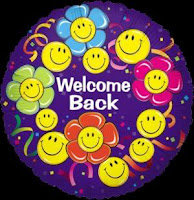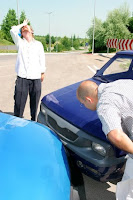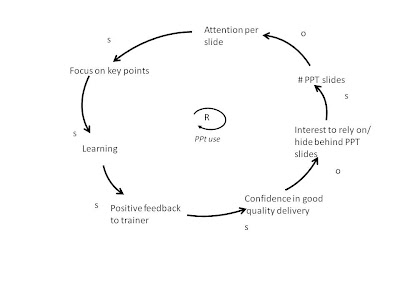 Learning can be a useful accelerator for the work you do. It can help keep you motivated, let you experience your progress in a different way, keep you engaged with wider processes. So how can you build more learning into your work life? As a learning practitioner, I asked myself this question, and here is what I came up with:
Learning can be a useful accelerator for the work you do. It can help keep you motivated, let you experience your progress in a different way, keep you engaged with wider processes. So how can you build more learning into your work life? As a learning practitioner, I asked myself this question, and here is what I came up with:
1. Ask great questions
It is surprising how many people don’t ask any questions, or only ask rhetorical, obvious or yes/no questions. Try to ask engagement questions that people want to answer, questions that ask people to think and share. Ask questions of yourself (like I just did). For all of your questions, consider how you ask them – an approach like Appreciative Inquiry can help you refine your questioning practice (it even works on yourself).
2. Listen for learning
Listening is a companion to number 1: How often do you ask yourself as you go into a listening or a conversation opportunity, “What do I want to learn?” Answering this question can help you listen very differently and more deliberately. You can also ask yourself, “How am I listening to this?” This can help you explore your openness to learning at that moment, and to notice when you are most receptive to new ideas and messages (and when you are not).
3. Be a better storyteller
Storytelling has so many contributions to make to learning, as we have written about so many times. It helps take you through the process of packaging your learning for better recall and resuse, makes it easier to repeat/retell (thus further embedding it), and makes your learning more useful not only to you, but also to others, as you do the work for them to distill the most meaningful parts of some experience or learning.
4. Start a blog/vlog
For so many reasons, blogs help you be a part of the conversation (even if you are only talking to yourself). They provide an opportunity to notice your experience and a provide a virtual place to record it. Because it’s public, it asks for some quality control (through, say, number 3 above.) Its chronological organization and tagging helps structure your experience, so it can be used as a knowledge management tool. And I personally use it to strengthen my reflective practice, more on this below.
5. Join a community of practice
These can be physical, virtual or both. They can help you share and be shared with, providing rich opportunities for peer learning. They can be even more useful if you use them to practice some of these other learning tools, like asking great questions, and listening for learning. If you don’t find a community of practice that fits, can you start one? (Ning makes this easy for virtual CoPs.)
6. Practice it
Find opportunities to try something again. Maybe you went to a great visual facilitation workshop – how can you continue to practice that even if you are a beginner? As you sit in on a conference call, or in a meeting, can you doodle icons of the conversation process ?
7. Move your learning into a different side of your brain
Can you add an image to the theory, or link your learning to a physical experience that makes the point visceral? Can you draw a diagram that explains your thinking in addition to writing a paragraph about it? Can you move your learning from knowledge to behaviour change, from left brain to right?
8. Notice/Map your personal knowledge management system
If knowledge is a flow, how are you tracking the flows? What kinds of tools are you using to manage this flow – google is good of course, and what other kind of nets are you throwing out in the ocean of information to help you get the quality of inputs you need when you need them? In effect, what are you using as your personal knowledge management system? For example, do you have a list of the gurus in your field whose blogs or tweets you follow? Do you tag useful incoming content in your gmail or in a delicious account? Can you improve your email management system (e.g. through something like Inbox Zero?) Plenty of opportunities exist in the Web2.0 world of today.
9. Be deliberate about reflection
People use different means for this, and generally agree that they are more fully present for learning when they are actively reflecting on their experience. Capture, whatever your tool – journaling, blogging, songwriting, slam poetry – is helpful for many reasons that can be found in the points above. The choices you make about what to record helps to prioritise information, makes it more reusable and, depending on your tool, makes it available on demand for both yourself and others.
10. Help other people learn
In addition to the obvious social value of this, learning through teaching (with a small “t”, thus not necessaily in a formal learning setting) is a well known way to embed learning. How can you volunteer your learning to others and in doing so practice and progress your own? Every conversation is an opportunity to exchange, so you don’t need to have a classroom environment to help other people learn.
11. Know your own learning preferences
There are of course diagnostics around this, and I think one of the simplest ways to identify your learning preferences is to ask yourself some questions (and voila we’re back to point 1): “When was the last time I learned something new? What were the conditions that helped me learn? What was I doing? What were the people around me doing to help me learn? In what situations do I learn the best?”
Learning happens continually, and still there are always opportunities to integrate it more powerfully into personal practice and team practice, even without a training budget. For example, just writing this blog post gave me an opportunity for learning, which combined many of the above. Once you get out of the formal learning environment it’s free for the most part, it’s relatively easy, and still, it takes a little thought, and perhaps a change in daily practice. The rewards, however, can be great – a boost in productivity, satisfaction, direct engagement with your topic, as well as an opportunity to strengthen yourself as a practitioner and further increase the value of your contribution to your community(ies) of choice.



























